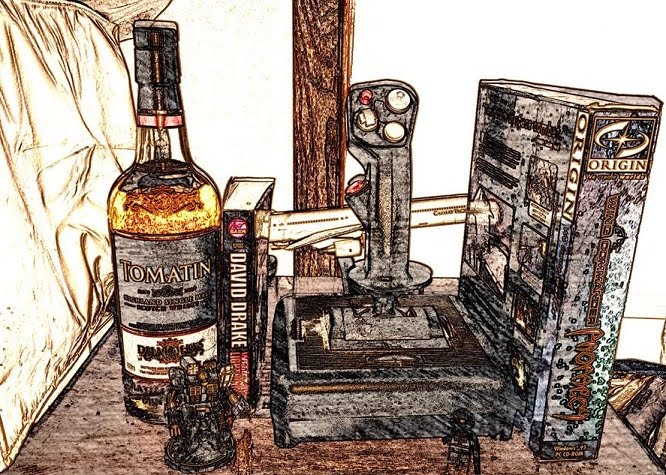This week, we take on the third and final flyable aircraft
from the first training mission in Flying
Tigers: Shadows Over China, and also the initial star of the fourth mission
in the game. The Brewster F2A Buffalo is something like the Rodney Dangerfield
of World War II aircraft, it gets no respect at all. A frequent inclusion in
various “World’s Worst Aircraft” lists, the poor Buffalo was generally disliked
by American and British pilots, but also loved by the Finns, who compiled a
32-to-1 kill ratio against early Russian aircraft during the Continuation War
of 1941-1944. (Although this last stat could also simply be considered more
proof that Finlanders will happy kill Russians with whatever equipment they
have available. See also Simo Häyhä.)
 |
| RAAF Buffalos of No. 453 Squadron. (Wikipedia) |
First flown in December 1937, the F2A-1 Buffalo was the
United States Navy’s first monoplane fighter. While it won the fly-off
competition against Grumman’s F4F Wildcat, Brewster’s production delays and management
issues pushed the Navy into procuring the Wildcat as well. By the time war
broke out in the Pacific, only a handful of Buffalo squadrons were still
operated by the U.S. Navy, while the Finns, the RAF, and the Dutch operated
squadrons of their own.
 |
| Dutch Buffalo from IL-2, dirtied up for landing. |
Of the three major sub-variants of the Buffalo that were
produced, it is the performance of the final version, the F2A-3, which mostly
earns the poor Buffalo its place of shame on “World’s Worst” lists. That
version, with increased fuel capacity, cockpit armor, and heavier weapons, was
simply more weight than even the upgraded engine could handle. Where early
F2A-1 and -2 models were compared favoriably to the P-40Bs of the time, the -3
was simply inferior in almost every way to not only other U.S. Navy fighters,
but critically inferior to the Japanese Zeros against which it would be flying
in the opening year of World War II in the Pacific.
British Buffalos suffered similarly to the American F2A-3
models. Overloaded and underpowered for the hot, high climates of Malay and
Burma, the export model B-339Es were often run with a minimum of fuel and ammunition
to at least keep up with the older Ki-27s that the IJAAF initially flew in theatre.
With the arrival of the Ki-43, however, the Buffalo’s days were essentially
over.
 |
| B-339C Replica in the Netherlands. Wikipedia |
There are no restored, flying Buffalos. Given its
reputation, there are no flying replicas either. A single restored B-339 of the
Finnish Air Force is displayed in the Aviation
Museum of Central Finland. In addition, a full-scale replica B-339 built by
the Cradle of Aviation Museum is
displayed in Militaire-Luchtvaartmuseum of the Netherlands. A second
replica F2A-2, also built by the Cradle of Aviation Museum and sporting U.S.
Navy markings is displayed at that museum.
 |
| Odd, but historically true markings of another British Buffalo from IL-2 |
Virtual pilots, at least, have an easier time finding the cockpit
of a Buffalo. In addition to its appearance in FTSOC, it shows up as a Tier IV American multirole fighter in World of Warplanes, and in War Thunder as a Tier 3 aircraft. The
more sim-minded can find both the Finnish B-339 and American F2A variants in IL-2, still my old go-to for combat
flight sims.

No comments:
Post a Comment